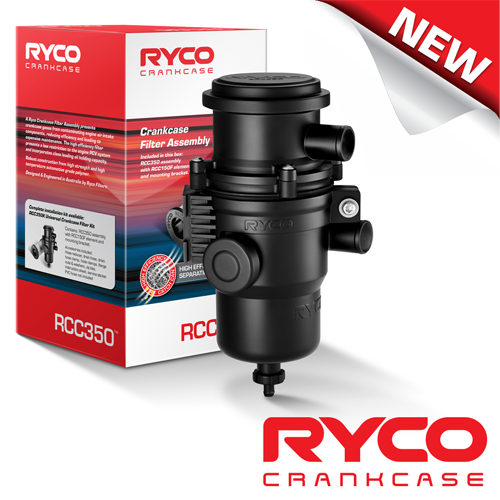
The modern turbocharged common rail diesel engine is an absolute gem when it comes to torque, power and fuel economy. But these engines have a dark and disturbing secret that owners of these vehicles just don’t find amusing.
The engine intake manifolds tend to cake up with a sticky black muck or sludge, and soon becomes badly restricted. Without being properly cleaned, the engine will suffer from power loss, increased fuel consumption and a vehicle that breaths like an asthmatic after a 100 meter sprint.
While there are a variety of ways of removing this sludge - all of which require an unwanted and expensive trip to the mechanical workshop, the best course of action is to avoid the build-up in the first place. This can be done easily and inexpensively, by installing a RYCO Crankcase Ventilation System.
The “Ryco Crankcase Filtration System” prevents any carbon causing crankcase gasses from entering the intake manifold by filtering oil vapours and hydrocarbon liquids from the crank case breather.
The RCC350 is plumbed into the crankcase breather system between the engine outlet and the fresh air intake ducting.
When the engine is operating under peak crankcase gas generation conditions, the vapour mix is pushed from the engine into the unit’s inlet where it passes through a filter comprising of a high efficiency coalescing media. Any hydrocarbon liquid, oil vapour or water condensation gathers on the media surface. When these particles form large enough droplets, they fall to the large oil collection sump at the base of the unit.
Crankcase gasses flow easily through the filter media and into the engine inlet, where “dry” pollutants are drawn into the cylinders and burnt. Because the gas entering the intake no longer contains the chemicals that cause sludge formation, carbon blocking of the intake manifold is effectively eliminated.
When initially fitted to the vehicle, the RCC350 should be inspected and drained if necessary, fairly regularly to determine the crankcase emissions output. Engines may require different inspection and drain cycles based on their individual power, wear and operating conditions – although its advised not to exceed 5000 km’s for normal engine operation, or every 2500 km’s for severe operating conditions.
The filter has a lifespan of 40 000kms – with easy access and replacement by removal of the four housing lid screws.
If a filter change interval is missed, the vehicle creates excessive crankcase gasses, or if the oil level in the filter sump to allowed to get too high and obstruct the filter prematurely blocking the element, a bypass valve within the unit will open allowing crankcase gasses to briefly vent to the atmosphere to protect the engine of unwanted back pressure
The check valve prevents captured contaminants to be drawn in to the engines air intake in the event of high vacuum in the intake system due to situations like engine over run.
So, if you own a turbo charged diesel vehicle, and you don’t want firsthand experience with a trip to the workshop looking to cure the “wheezy” breathing, then perhaps a Ryco Crankcase Filtration System is for you.